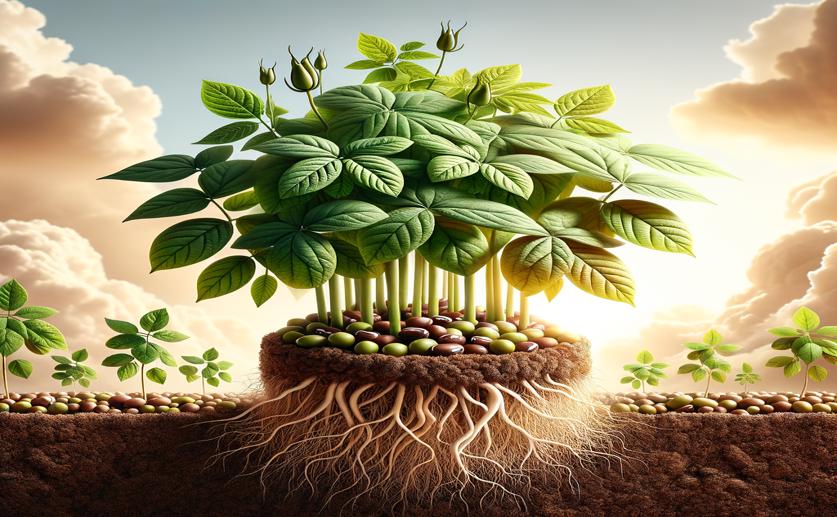
How Natural Growth Boosters Help Mung Beans Grow Without Soil
Jenn Hoskins
13th June, 2024

Image Source: Natural Science News, 2024
Key Findings
- The study by The Gandhigram Rural Institute explored creating hydrogels from pectin and activated carbon for soilless cultivation
- PAC hydrogels have a microporous structure with excellent hydrophilicity and superior water holding capacity compared to pure pectin hydrogels
- These hydrogels can improve water retention and nutrient availability, making them suitable for agriculture, especially in water-deficit conditions
AgricultureBiochemPlant Science
References
Main Study
1) Experimental assessment of biostimulants on mung bean growth on a soilless culture system using superabsorbent pectin based hydrogel.
Published 10th June, 2024
https://doi.org/10.1016/j.ijbiomac.2024.133058
Related Studies
2) Hydrogels as the plant culture substrates: A review.
3) Effect of sodium alginate-based superabsorbent hydrogel on tomato growth under different water deficit conditions.
4) An Overview of Soil and Soilless Cultivation Techniques-Chances, Challenges and the Neglected Question of Sustainability.
5) Synthesis and characterization of novel carboxymethylcellulose hydrogels and carboxymethylcellulolse-hydrogel-ZnO-nanocomposites.



 7th June, 2024 | Jenn Hoskins
7th June, 2024 | Jenn Hoskins